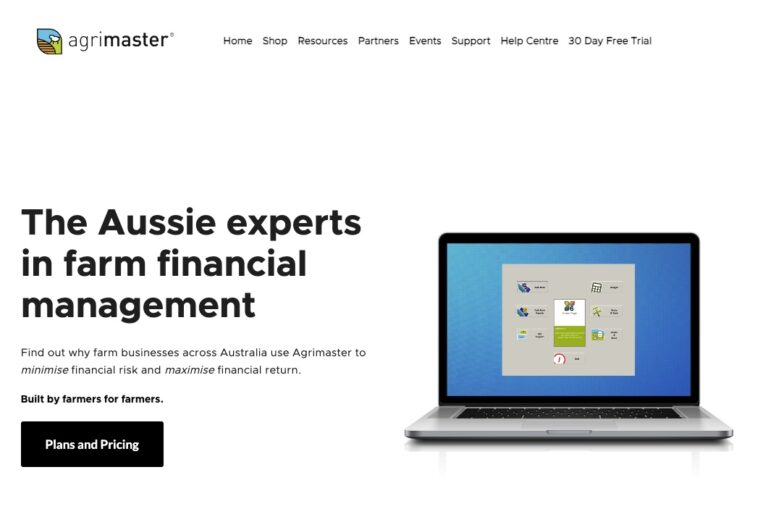Introduction
In the vibrant world of agriculture, success often hinges on making smart financial decisions. That’s where farmers financial solutions come into play, acting as the backbone for agricultural prosperity. In this article, we explore six key ways in which farmers financial solutions can be the catalyst for your farm’s growth.
1. Investment in Advanced Farming Equipment
The challenges of contemporary agriculture where productivity levels keep rising, sustainability and precision at the farm level are the issues that are critical in the adoption of up to date technology and equipment. This section is dedicated to explaining the significance of modern gear and presenting financial solutions that improve the process of such investing.
The Necessity of Modern Equipment
The most important change that has to be made by farmers is the adoption of technological innovations, which increase their productivity and meet the evolving needs of agriculture. Smart farming technology is a broad term that includes various tools, apparatuses, and gadgets designed to increase efficiency of productive resource utilization and crop quality optimization. Some key categories of modern equipment include:
- Precision Agriculture Tools: Precision Agriculture employs the help of technologies such as global positioning and navigation systems, drones, and sensors to in real time control variations on the field, attend to the health condition of crops, and portion out the inputs such as water, fertilizers, and pesticides. By introducing these tools farmers will get better yields while they lower resource utilization and negative impact on the environment;
- Mechanized Farm Machinery: Modern tractors, harvesters, and implements that are now featured with emerging technologies such as driverless operation, variable rate technology, and real-time data analysis have reenergized farm operations. Machines perform some of the tasks including planting, cropping and ridging the fields which reduces the amount of time and assures precision in the work;
- Smart Irrigation Systems: Water deficiency and ineffective water management prove the criticality of intelligent irrigation systems. These systems often rely on sensors, weather forecasts, and data analytics to come up with the most effective schedule of water usage which also ensures proper soil moisture levels and therefore the sustainable production of crops.
Financial Solutions in Action
While the benefits of investing in advanced farming equipment are evident, the upfront costs can be prohibitive for many farmers. Fortunately, various financial solutions exist to facilitate equipment acquisition and alleviate financial burdens. These solutions are tailored to the unique needs and constraints of agricultural businesses, offering flexible financing options that empower farmers to access cutting-edge technology. Some key financial solutions include:
- Equipment Financing: Farmers can avail themselves of equipment financing options provided by banks, agricultural lenders, and equipment manufacturers. These financing arrangements allow farmers to purchase or lease equipment while spreading the cost over time through installment payments. Additionally, customized loan structures, competitive interest rates, and favorable repayment terms cater to the financial constraints of farmers, making advanced equipment more accessible;
- Government Grants and Subsidies: Many governments offer grants, subsidies, and incentive programs to encourage the adoption of advanced farming technology and equipment. These financial assistance schemes aim to support farmers in modernizing their operations, enhancing productivity, and promoting sustainable agricultural practices. By leveraging such opportunities, farmers can offset a portion of the investment costs and accelerate the adoption of innovative equipment;
- Equipment Leasing and Rental Services: Equipment leasing and rental services provide alternative procurement options for farmers seeking to acquire advanced equipment without significant upfront capital outlay. Through leasing agreements, farmers can use the equipment for a specified period while paying periodic lease payments. This approach offers flexibility, scalability, and risk mitigation, as farmers can upgrade to newer equipment models or adjust their fleet size according to changing needs.
2. Expansion and Diversification of Farm Operations
Expanding and diversifying farm operations is a strategic move that can significantly enhance the sustainability and profitability of agricultural enterprises. This process involves broadening the scope of activities beyond traditional practices, such as increasing crop varieties, venturing into livestock farming, or exploring niche markets. Here, we delve into the intricacies of expansion and diversification in farming, highlighting the role of financial solutions in facilitating these transformative endeavors.
Expansion Strategies in Farming
Expansion in farming typically involves scaling up existing operations or acquiring additional resources to accommodate growth. This can encompass various aspects, including:
- Acquisition of Additional Land: Increasing the landholding allows farmers to cultivate more crops or expand their livestock operations. It enables them to optimize economies of scale and boost overall productivity;
- Diversification of Crop Production: Farmers may opt to cultivate a broader range of crops to spread risk and capitalize on market opportunities. Diversification can involve introducing new varieties, experimenting with different agricultural practices, or integrating complementary crops into existing rotations;
- Integration of Livestock Farming: Integrating livestock into farm operations offers synergistic benefits, such as utilizing manure as fertilizer, enhancing soil fertility, and diversifying revenue streams. This can range from small-scale poultry or beekeeping to large-scale cattle ranching.
Diversification into New Agricultural Sectors
Diversification entails exploring new avenues within the agricultural sector, beyond conventional practices. This may involve:
- Specialized Crop Production: Venturing into niche crops or high-value specialty markets can offer lucrative opportunities for farmers. Specialty crops such as organic produce, medicinal herbs, or exotic fruits often command premium prices in niche markets;
- Value-Added Processing: Adding value to agricultural products through processing or manufacturing can unlock new revenue streams. This could include activities like producing artisanal cheeses, crafting gourmet jams, or processing grains into flour or animal feed;
- Agritourism and Direct Marketing: Capitalizing on agritourism or direct marketing initiatives can diversify income sources and enhance rural livelihoods. Farmers can offer farm tours, educational workshops, or on-farm experiences such as u-pick operations or farm-to-table dining experiences.
Role of Financial Solutions in Facilitating Expansion and Diversification
Financial solutions tailored to the unique needs of farmers play a pivotal role in facilitating expansion and diversification endeavors. These solutions provide access to the necessary capital and financial tools required to realize growth ambitions. Key aspects include:
- Access to Capital: Farmers often require capital infusion to finance land acquisitions, purchase equipment, or invest in infrastructure for expansion projects. Financial institutions, agricultural lenders, and government programs offer various financing options tailored to the agricultural sector;
- Flexible Repayment Terms: Recognizing the cyclical nature of farming income, financial solutions often feature flexible repayment terms. This may include seasonal repayment schedules aligned with crop harvests or customized payment structures to accommodate fluctuating cash flows;
- Risk Management Tools: Expansion and diversification entail inherent risks, including market volatility, weather uncertainties, and operational challenges. Financial solutions may incorporate risk management tools such as crop insurance, hedging strategies, or contingency funds to mitigate these risks and safeguard investments.
3. Access to Adequate Insurance Coverage

In order to safeguard investments and ensure the sustainability of farm operations, it is imperative for farmers to have access to adequate insurance coverage. This section explores the importance of insurance in risk management for agricultural enterprises and how financial solutions can facilitate the acquisition of comprehensive coverage.
Understanding the Risks in Farming
Farming is subject to a multitude of risks that can significantly impact productivity and profitability. Some common risks include:
- Natural Disasters: Events such as floods, droughts, hurricanes, and wildfires can cause extensive damage to crops, livestock, and infrastructure;
- Market Fluctuations: Price volatility in agricultural commodities can affect farm income, leading to financial instability and reduced profitability;
- Crop Failure: Factors such as pests, diseases, and adverse weather conditions can result in crop failures, leading to substantial losses for farmers;
- Livestock Losses: Disease outbreaks, accidents, or theft can lead to losses in livestock inventory, affecting farm revenue and operations.
Role of Insurance in Risk Management
Insurance serves as a crucial risk management tool for farmers, providing financial protection against unforeseen events and mitigating the impact of adverse circumstances. Key benefits of insurance coverage include:
- Financial Security: Insurance policies provide compensation for losses incurred due to covered events, helping farmers recover and rebuild in the aftermath of disasters;
- Risk Transfer: By transferring the financial risk to insurance providers, farmers can mitigate their exposure to potential losses, ensuring greater stability and resilience in farm operations;
- Business Continuity: Adequate insurance coverage ensures continuity of operations by minimizing disruptions caused by unexpected events, thereby safeguarding the long-term viability of the farm.
Insurance Options Through Financial Solutions
Many financial solutions tailored for farmers include options for comprehensive insurance coverage, offering a range of products to address specific needs and risks. These insurance offerings may include:
- Crop Insurance: Crop insurance policies protect against yield losses caused by adverse weather, pests, and other perils. They typically cover a variety of crops and provide indemnity payments based on predetermined coverage levels and loss thresholds;
- Livestock Insurance: Livestock insurance policies compensate farmers for losses resulting from mortality, accidents, or theft of livestock. Coverage may vary depending on the species and specific risks covered by the policy;
- Revenue Protection Insurance: Revenue protection insurance safeguards farm income by compensating for revenue losses due to price declines or yield shortfalls. It offers a combination of yield and price coverage to ensure comprehensive risk mitigation;
- Property and Infrastructure Insurance: Property and infrastructure insurance policies protect farm assets such as buildings, equipment, and vehicles against damage or loss caused by perils such as fire, theft, or vandalism.
4. Improved Cash Flow Management
Agriculture, by its very nature, experiences significant fluctuations in cash flow due to the seasonal dynamics of farming activities. Managing these variations is crucial for ensuring financial stability and sustainability in agricultural operations. This section explores the challenges associated with seasonal cash flow in agriculture and how financial solutions can assist farmers in effectively managing their cash flow.
Understanding Seasonal Variations in Cash Flow
Cash flow in agriculture is heavily influenced by the timing of revenue generation and expenditure throughout the farming cycle. Some key factors contributing to seasonal variations include:
- Crop Harvests: Revenue from crop sales is typically realized during specific harvest seasons, leading to peaks in cash inflows;
- Input Purchases: Expenses related to purchasing seeds, fertilizers, pesticides, and other inputs are incurred prior to planting or during the growing season, resulting in periods of increased cash outflows;
- Equipment Maintenance and Repairs: Maintenance and repair costs for farm equipment may vary throughout the year, with higher expenditures often occurring during downtime between planting and harvesting seasons;
- Labor Expenses: Labor costs may fluctuate depending on seasonal demands, such as hiring additional workers during planting and harvesting periods.
Financial Solutions for Cash Flow Management
To address the challenges posed by seasonal cash flow fluctuations, farmers can leverage various financial solutions tailored to their specific needs. These solutions offer flexibility and liquidity to manage cash flow effectively. Some common financial products and services include:
- Short-Term Loans: Short-term loans provide farmers with access to immediate funds to cover operating expenses during periods of low cash flow. These loans are typically repaid within a short timeframe, allowing farmers to bridge temporary gaps in cash flow without long-term financial commitments;
- Lines of Credit: Lines of credit offer farmers a flexible source of financing to meet ongoing operational needs. Farmers can draw funds as needed, up to a predetermined credit limit, and repay the borrowed amount based on their cash flow cycles. This flexibility allows farmers to manage cash flow fluctuations without having to access additional financing each time;
- Cash Flow Forecasting Tools: Financial institutions may offer cash flow forecasting tools and advisory services to help farmers anticipate cash flow trends and plan their finances accordingly. These tools enable farmers to make informed decisions about budgeting, borrowing, and investment strategies, thereby optimizing cash flow management and reducing financial risk.
Benefits of Cash Flow Management Services
Effective cash flow management through financial solutions offers several benefits for farmers:
- Stability and Resilience: By smoothing out cash flow fluctuations, farmers can maintain financial stability and resilience, reducing the risk of cash flow shortages or financial distress during lean periods;
- Improved Planning and Decision-Making: Access to timely and reliable financing enables farmers to plan and execute their operations more efficiently, optimizing resource allocation and maximizing returns on investment;
- Opportunity for Growth and Expansion: Enhanced cash flow management provides farmers with the financial flexibility to seize growth opportunities, invest in new technologies, or expand their operations, driving long-term prosperity and competitiveness.
5. Access to Expert Financial Advice

Given the complexity of financial decision-making in agriculture, access to expert financial advice is invaluable for farmers seeking to optimize their financial management practices and drive sustainable growth. This section explores the importance of expert financial advice in agriculture and how farmers can benefit from advisory services offered by providers of financial solutions.
Understanding the Complexity of Financial Management in Agriculture
Farming operations entail a wide array of financial considerations, from budgeting and cash flow management to investment planning and risk mitigation. Farmers must navigate a dynamic environment characterized by fluctuating commodity prices, regulatory changes, and evolving consumer preferences. Some key financial aspects of agriculture include:
- Budgeting and Financial Planning: Developing comprehensive budgets and financial plans is essential for allocating resources efficiently and achieving long-term financial objectives;
- Risk Management: Identifying and managing risks, such as market volatility, weather-related disruptions, and operational challenges, is critical for protecting farm assets and ensuring financial stability;
- Investment Analysis: Evaluating investment opportunities, whether in land, equipment, technology, or diversification ventures, requires careful analysis of potential returns, risks, and market trends;
- Tax Planning and Compliance: Farmers need to navigate complex tax regulations and optimize their tax strategies to minimize liabilities and maximize tax benefits.
Role of Expert Financial Advice in Agriculture
Expert financial advice plays a pivotal role in helping farmers navigate the intricacies of financial management and make informed decisions to support their business goals. Some key benefits of accessing expert financial advice include:
- Tailored Solutions: Financial advisors can provide customized solutions tailored to the specific needs and objectives of individual farmers, taking into account factors such as farm size, location, crop specialization, and risk tolerance;
- Strategic Planning: Advisors can assist farmers in developing strategic plans for growth and expansion, identifying opportunities for diversification, market development, and operational optimization;
- Risk Mitigation: By leveraging their expertise in risk management strategies and insurance solutions, financial advisors can help farmers mitigate potential risks and safeguard their financial interests against unforeseen events;
- Financial Literacy: Expert financial advisors can empower farmers with the knowledge and skills needed to make informed financial decisions, enhancing their financial literacy and confidence in managing their operations effectively.
Advisory Services Offered by Providers of Financial Solutions
Many providers of farmers’ financial solutions offer a range of advisory services to support farmers in achieving their financial goals. These services may include:
- Investment Advisory: Guidance on investment opportunities, portfolio diversification, and asset allocation strategies to optimize returns and manage risk;
- Risk Management Consulting: Assistance with identifying and evaluating risks, implementing risk mitigation strategies, and selecting appropriate insurance products;
- Financial Planning: Comprehensive financial planning services encompassing budgeting, cash flow management, retirement planning, and succession planning for family-owned farms;
- Tax Advisory: Expert advice on tax planning, compliance, and optimization strategies to minimize tax liabilities and maximize tax efficiency.
6. Sustainable Farming Practices
There has been a notable shift towards sustainable farming practices within the agricultural sector. This section explores the importance of sustainable farming practices, the financial support available for such initiatives, and how farmers can leverage specific financial solutions to promote environmental stewardship on their farms.
Understanding Sustainable Farming Practices
Sustainable farming practices are designed to minimize environmental impact, conserve natural resources, and promote long-term agricultural resilience. These practices prioritize ecological health, biodiversity conservation, and soil fertility while striving to enhance farm productivity and profitability. Key components of sustainable farming include:
- Crop Rotation and Diversification: Rotating crops and diversifying plantings help improve soil health, reduce pest pressure, and enhance resilience to climate variability;
- Conservation Tillage: Minimizing soil disturbance through practices such as no-till or reduced tillage helps prevent erosion, preserve soil structure, and sequester carbon;
- Water Conservation: Implementing water-efficient irrigation techniques, such as drip irrigation or rainwater harvesting, helps conserve water resources and minimize water wastage;
- Integrated Pest Management (IPM): IPM strategies aim to manage pests using a combination of cultural, biological, and chemical control methods, minimizing reliance on synthetic pesticides and fostering natural pest predators.
Financial Support for Sustainability Initiatives
Recognizing the importance of sustainable farming practices, certain farmers’ financial solutions are designed to provide support and incentives for farmers adopting eco-friendly initiatives. These solutions may offer:
- Special Rates or Grants: Financial institutions and government programs may offer preferential interest rates or grants for projects that focus on sustainability, such as transitioning to organic farming, implementing renewable energy systems, or adopting conservation practices;
- Subsidized Inputs: Some financial solutions may provide subsidies or discounts on inputs such as organic fertilizers, cover crops, or energy-efficient equipment to encourage adoption of sustainable practices;
- Incentive Programs: Incentive programs, such as carbon offset markets or conservation easements, may offer financial rewards for farmers who implement practices that sequester carbon, enhance biodiversity, or protect sensitive habitats.
Leveraging Financial Solutions for Sustainability
Farmers can leverage specific financial solutions to support their efforts towards sustainable farming practices. These solutions may include:
- Sustainable Agriculture Loans: Financial institutions may offer specialized loans tailored to support investments in sustainable agriculture practices, such as organic certification, agroforestry projects, or soil conservation measures;
- Green Financing Programs: Green financing programs provide funding for environmentally sustainable projects, including renewable energy installations, energy-efficient infrastructure upgrades, and water conservation initiatives;
- Carbon Farming Markets: Participating in carbon farming markets allows farmers to generate revenue by sequestering carbon through practices such as cover cropping, reforestation, or wetland restoration, with financial incentives provided through carbon credits;
- Sustainability Grants: Government agencies, nonprofit organizations, and agricultural associations may offer grants and funding opportunities specifically targeted towards supporting sustainability initiatives in agriculture.
Conclusion
The importance of farmers financial solutions in supporting and growing a farming business cannot be overstated. From enabling the purchase of state-of-the-art equipment to facilitating expansion and offering protection against risks, these financial solutions are integral to the success and sustainability of farms. As the agricultural sector continues to evolve, staying informed and making the most of available financial solutions will be key to thriving in this ever-changing landscape.
FAQ
Farmers financial solutions typically offer a variety of loans including equipment financing, land purchase loans, and operational loans tailored to the unique needs of farmers.
Yes, many programs are specifically designed to support new and beginning farmers, offering them the financial backing they need to start and grow their farming businesses.
Besides offering insurance products, some farmers financial solutions provide market advisory services, helping farmers navigate price fluctuations and market trends.
Yes, some financial solutions include grant programs, particularly for initiatives in sustainability and innovation in farming.
Financial solutions for farmers are often available through banks, agricultural financial institutions, and government programs. It’s advisable to research and consult with financial experts in the agricultural sector.











